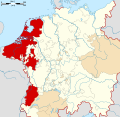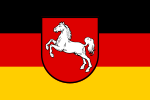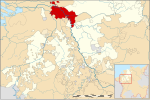The Lower Rhenish–Westphalian Circle (German: Niederrheinisch-Westfälischer Reichskreis, Dutch: Nederrijns-Westfaalse Kreits) was an Imperial Circle of...
22 KB (231 words) - 01:18, 5 November 2024
Saxon Circle the Swabian Circle the Upper Rhenish Circle the Lower Rhenish-Westphalian Circle Originally, the territories held by the Habsburg dynasty and...
7 KB (683 words) - 13:08, 21 October 2024
1548 shifted the seventeen provinces from the Lower Rhenish–Westphalian Circle to the Burgundian circle, resulting in a significant territorial gain for...
10 KB (1,195 words) - 03:39, 21 October 2024
west of Cologne and southeast of the Low Countries, in the Lower Rhenish–Westphalian Circle. The pilgrimages, the Coronation of the Holy Roman Emperor...
6 KB (484 words) - 14:20, 11 August 2024
Electorate itself remained officially Protestant. Entries are listed by Imperial Circle (introduced 1500, 1512) even for territories that ceased to exist prior...
51 KB (709 words) - 22:00, 28 October 2024
the creation of the imperial circles in 1500, a Lower Saxon Circle was distinguished from a Lower Rhenish–Westphalian Circle. The latter included the following...
65 KB (6,641 words) - 14:12, 21 October 2024
was Prince-Bishop of Münster, Osnabrück, and Minden in the Lower Rhenish–Westphalian Circle of the Holy Roman Empire. He suppressed the Münster Rebellion...
7 KB (685 words) - 06:29, 30 August 2024
County of Mark (category Lower Rhenish-Westphalian Circle)
Mark) was a county and state of the Holy Roman Empire in the Lower Rhenish–Westphalian Circle. It lay south of Lippe river on both sides of the Ruhr river...
14 KB (1,511 words) - 06:52, 31 October 2024
Duchy of Cleves (category Lower Rhenish-Westphalian Circle)
territories became one of the most significant estates of the Lower Rhenish–Westphalian Circle in 1500, rivaled by the Prince-Bishops of Münster. In 1511...
14 KB (1,206 words) - 06:53, 21 October 2024










